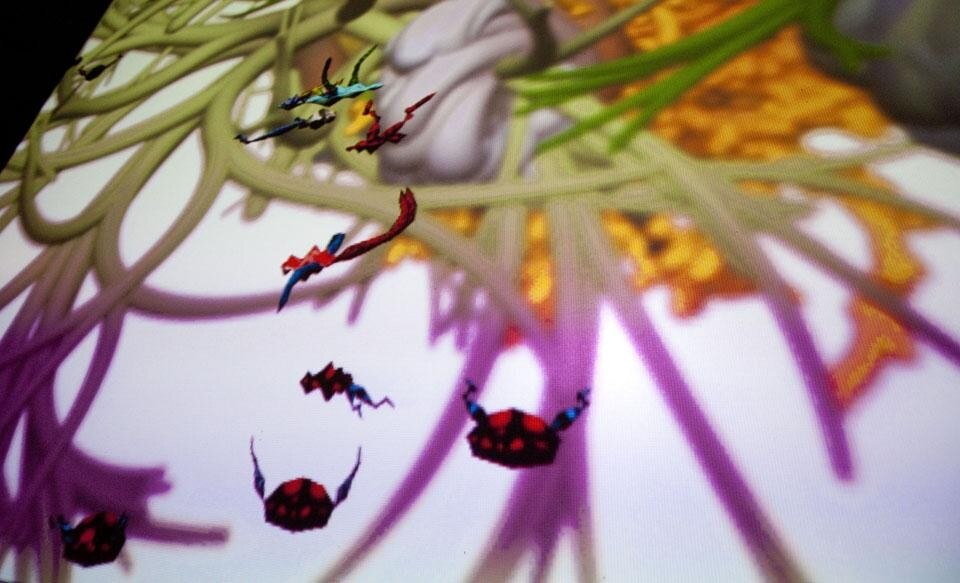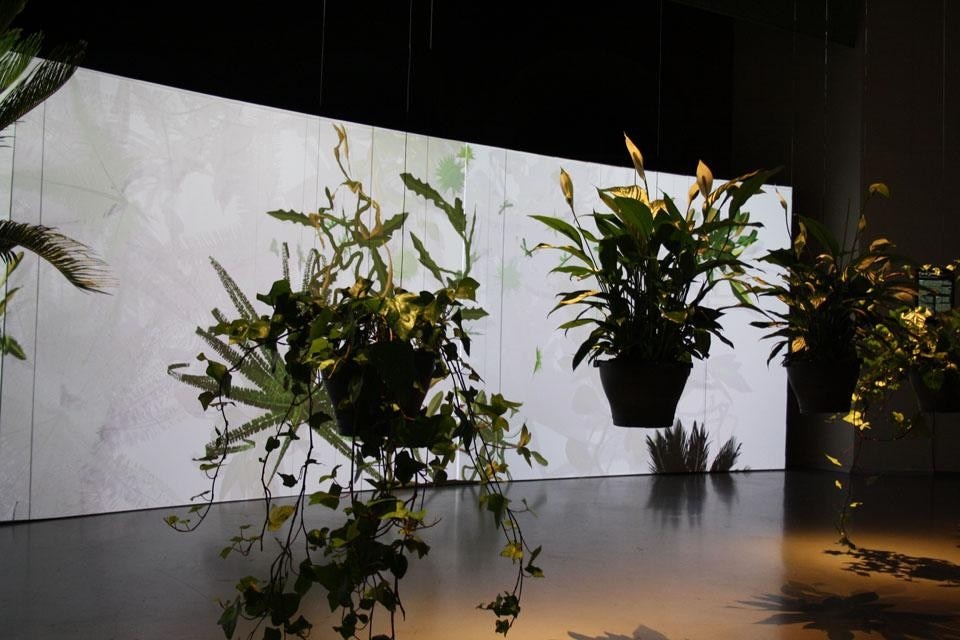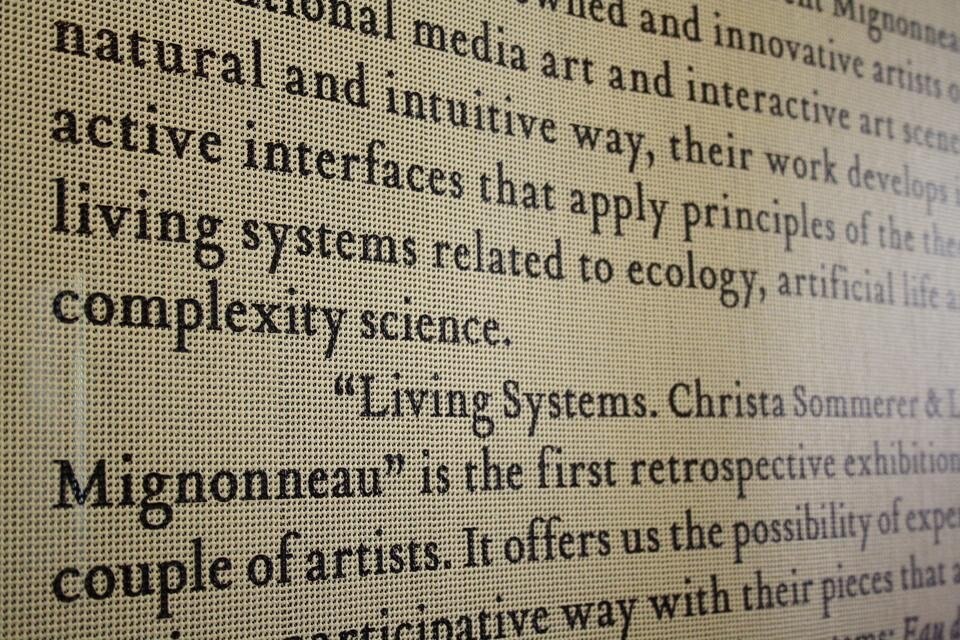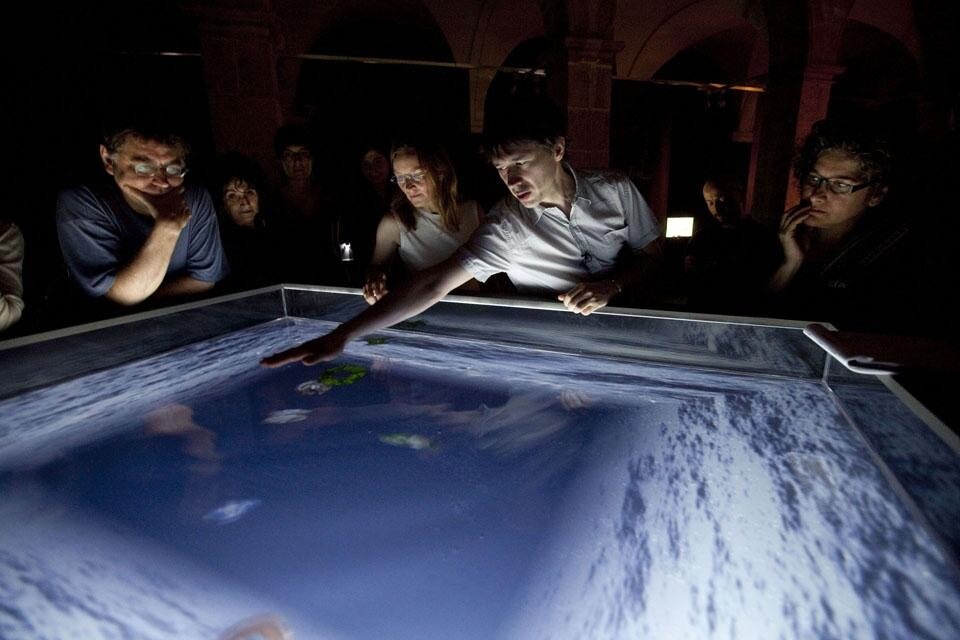This interactive exhibition offers us the possibility of experimenting in a participative way with all the pieces, which are most closely linked to the study of living systems: Eau de Jardin, Phototropy, Life Spacies II, Mobile Feelings and A-Volve. Ricard Solé, a researcher of complex systems, has collaborated on the compilation of the scientific vocabulary necessary to understand the artists' virtual ecosystems. The glossary of key-words that was born from this research, is also exhibited at the cloister of Arts Santa Mònica. The best thing of this intentional interactivity is the way it engages the participants at first hand with the exhibition project to learn more about the scientific content of the exhibition. The visitors can feel themselves in between a scientific laboratory and a children playground, where you can learn by playing.
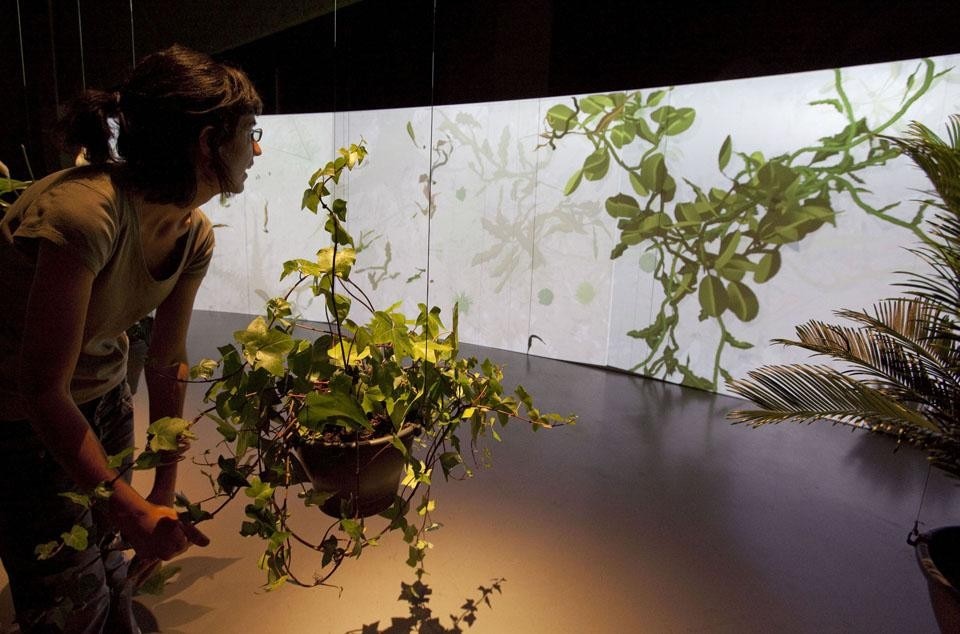
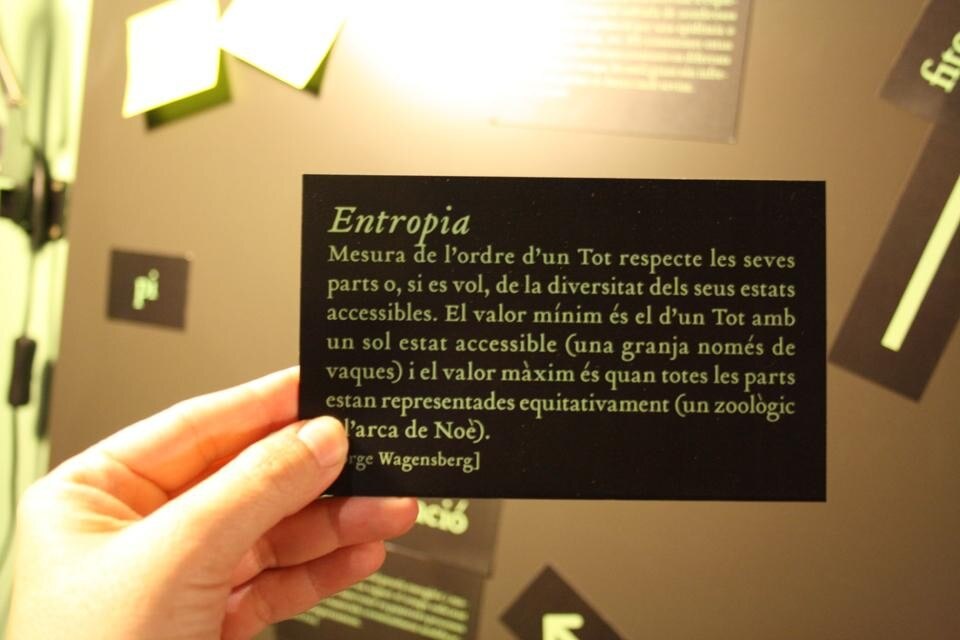
The best thing of this intentional interactivity is the way it engages the participants at first hand with the exhibition project to learn more about the scientific content of the exhibition. The visitors can feel themselves in between a scientific laboratory and a children playground, where you can learn by playing.
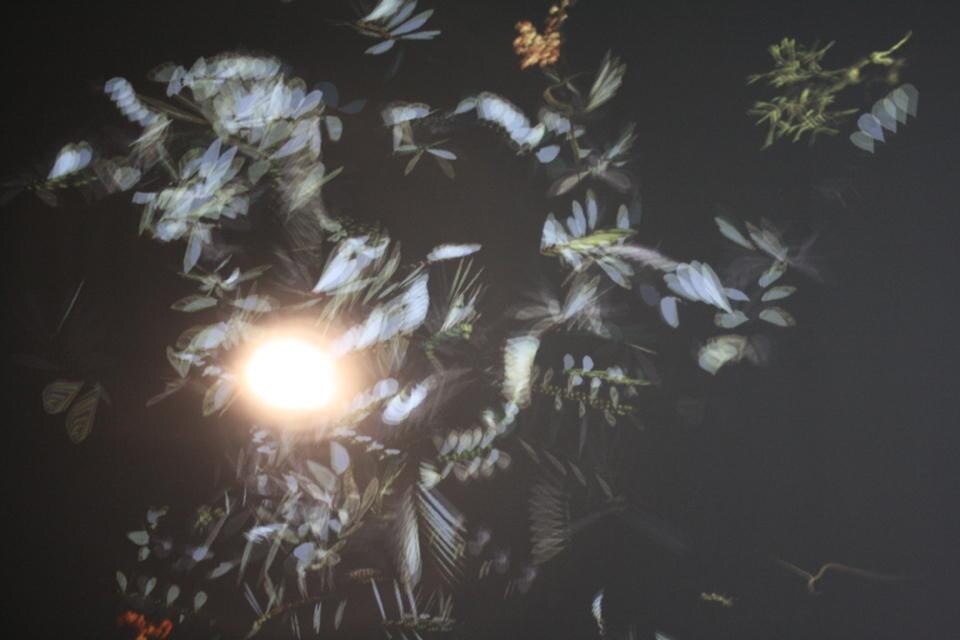
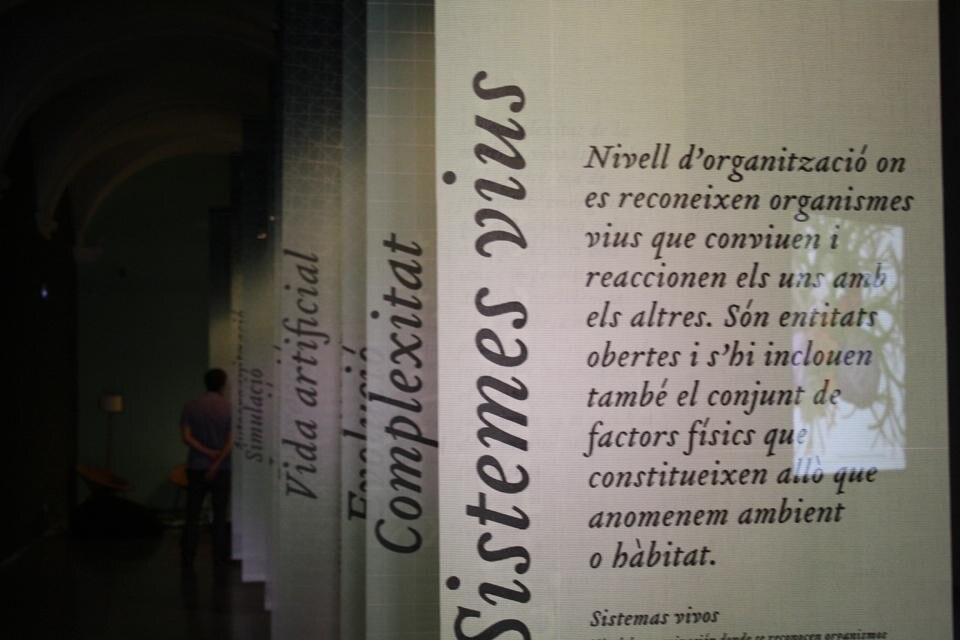
Ethel Baraona Pohl
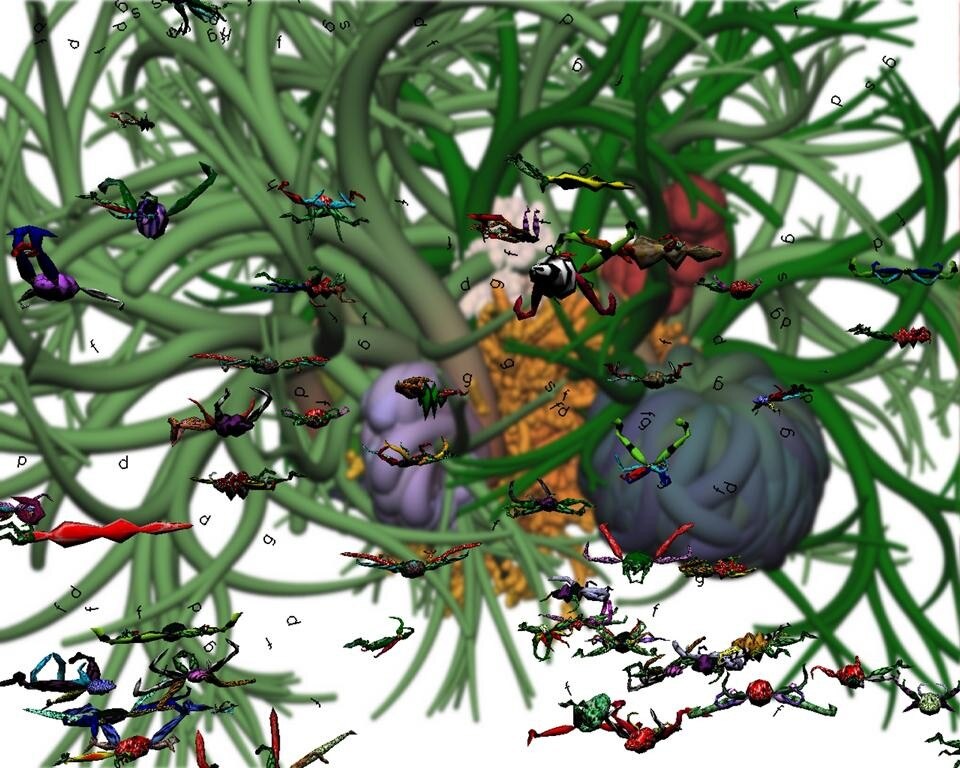
Arts Santa Mònica. Cloister [Floor 00]
La Rambla 7, Barcelona
